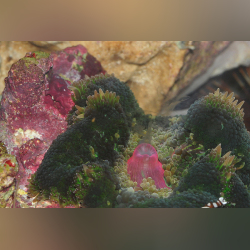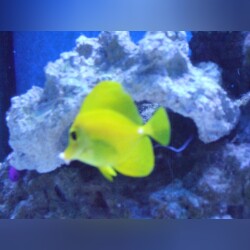Info
Halymenia durvillei Bory de Saint-Vincent, 1828
Used for human consumption; source of carrageenan Commonly found attached to rocks in lower intertidal to upper subtidal areas which are moderately exposed to wave action.
Text source: SeaLifeBase
Synonym:
Halymenia durvillaei
Biota > Plantae (Kingdom) > Biliphyta (Subkingdom) > Rhodophyta (Phylum) > Eurhodophytina (Subdivision) > Florideophyceae (Class) > Rhodymeniophycidae (Subclass) > Halymeniales (Order) > Halymeniaceae (Family) > Halymenia (Genus) > Halymenia durvillei (Species)
Used for human consumption; source of carrageenan Commonly found attached to rocks in lower intertidal to upper subtidal areas which are moderately exposed to wave action.
Text source: SeaLifeBase
Synonym:
Halymenia durvillaei
Biota > Plantae (Kingdom) > Biliphyta (Subkingdom) > Rhodophyta (Phylum) > Eurhodophytina (Subdivision) > Florideophyceae (Class) > Rhodymeniophycidae (Subclass) > Halymeniales (Order) > Halymeniaceae (Family) > Halymenia (Genus) > Halymenia durvillei (Species)







 Fischly
Fischly










